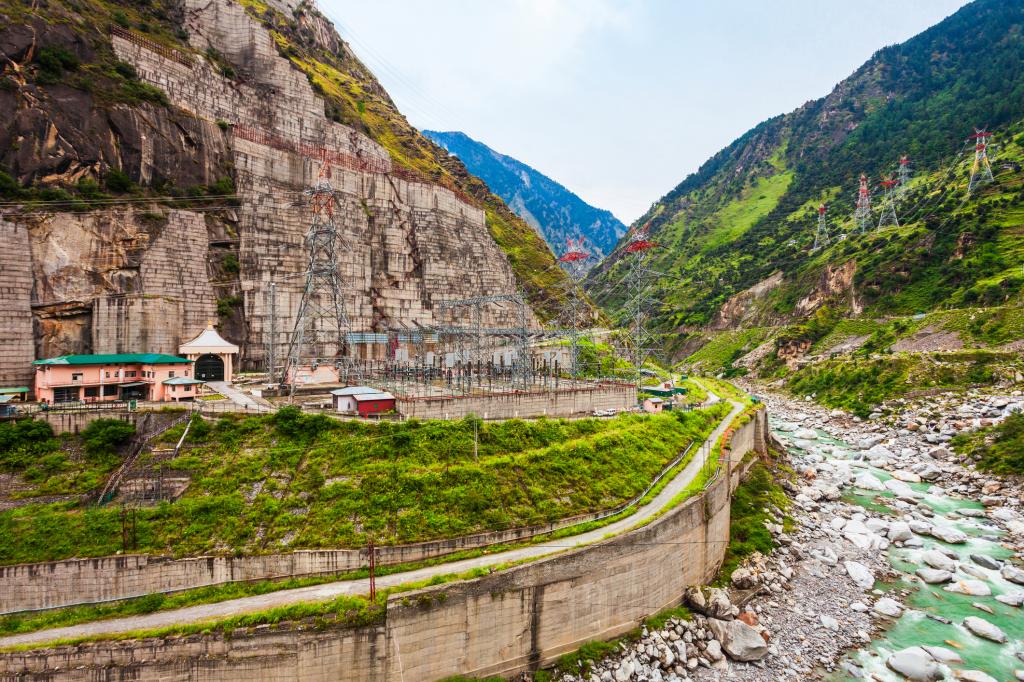

Ecological assessment pending for hydropower project plans in Himachal



The Himachal Pradesh forest department has raised environmental concerns over approving hydroelectric projects on the Ravi river basin in Chamba valley.
A letter written on November 26, 2022 to the joint secretary of the Union Ministry of Environment Forest and Climate Change (MoEF&CC) specified five projects in Himachal Pradesh and Haryana pending approval sans environment assessment.
The note by the chief conservator of forests (CCF), Chamba forest circle pointed out the lack of a culmulative study looking into the environmental effects of the projects.
Read more: Women protesting GMR's hydel project charged with 'inciting communal riots'
The proposed projects are: 240 megawatts (MW) Kuther Hydro Electric Project by M/s JSW Energy Ltd, 4.98 MW Ghator Top Small Hydro Electric Project (SHEP) and 5MW Rudraveer SHEP in Chamba, Himachal Pradesh.
The CCF also mentioned two Haryana projects, Jai Bani Mata HEP (24MW) and Jai Kartikay HEP (2.5MW).
The projects have not reeived approvals from the forest department for procuring land yet. The MoEF&CC has not yet given initial approvals due to conditions under the Forest Conservation Act for carrying capacity and cumulative impact assessment, the letter said.
The chief conservator of forests, Upasana Patiyal, wrote:
A cumulative study may be carried out by the state government on the behest of all project proponents on the Ravi river to assess the impact on the landscape in general and wildlife and ecological aspects in specific.
The user agency must submit an undertaking to comply with any additional conditions that the central government may stipulate based on the outcome of the said study, Patiyal said in the note.
The study will also look into issues like forest fragmentation and landscape-level changes due to the direct and indirect impact of the project. It should take into account the proposed and existing micro hydel projects on the project basin, the note added.
As these issues have not been looked into, the forest department is unable to recommend the FCA proposals received for the construction of hydroelectric projects, the CCF wrote.
“The carrying capacity and cumulative impact assessment for the projects have a striking resemblance to the Joshimath crisis in Uttarakhand,” Himanshu Thakkar, coordinator at South Asia Network on Dams, Rivers and People told Down To Earth. SANDRP is an informal network working on concerns related to rivers, communities and massive water infrastructure like dams
Joshimath crisis in Uttarakhand gained attention as residents on January 4, 2023 staged a protest to raise concerns about the deepening of cracks in houses due to land subsidence.
The land subsidence has affected at least 2,000 houses since October 2021. National Thermal Power Corporation’s (NTPC) Tapovan-Vishnugad hydropower project and Helang bypass led to the situation by hollowing the ground from the inside.
“All hydroelectric projects in the Himalayan region should be immediately stopped, considering the Joshimath incident,” said Nivit Yadav, programme director of the industrial pollution unit at Delhi-based non-profit Centre for Science and Environment.
Read more: Grasslands, forests and glaciers decreased in the Kedarnath-Joshimath region over 3 decades
These projects should be reassessed for their impact on the environment, he said.
“The cumulative impact assessment is an extension of Environment Impact Assessment which is limited to a single project, whereas the former involves multiple projects,” said Yadav.
Himalayan mountains are young and new compared to other mountain ranges. These mountains undergo continuous movement and therefore, it is time to go for detailed cumulative impact assessment where such hydro projects are proposed, he added.
A detailed study would also enable entrepreneurs and policymakers to understand what effect past projects have had on the environment and ecology for consideration in the future, Yadav said.
There are 167 hydroelectric projects that have been commissioned, are under construction or are planned to generate 2,835.12 MW of electricity, a 2016 study found. It was conducted by Himdhara Environment Research and Action Collective, a Himachal-based environment research group.
However, there is a need for more credible and accountable studies, even from the government agencies, said Thakkar.
“The assessments seem to include wildlife and ecological aspects, but geological and hydrology impacts are being ignored. One should know the impact of debris, changes in the landscape and hydrological changes the area will affect due to construction,” he told DTE.
The credibility of the studies needs improvement, said Thakkar. “If the assessment for the Tapovan-Vishnugad hydropower project included geological studies, the situation may have been different today. But the officials who conducted the studies and others responsible are not being held accountable,” he said.
Read more: Climate initiatives must keep out large hydropower projects, say environmentalists
The appraisal quality of the studies needs to be boosted dramatically, he said. It is also essential for these studies to be conducted by independent researchers and agencies whom the project developers do not fund.
“There is an urgent need to overhaul the process by including independent people who possess a track record of taking independent positions with an independent mind,” Thakkar said.
Multiple attempts to reach Patiyal and joint secretary of MoEF&CC Biswanath Sinha did not produce any response till the time of publishing this report.
We are a voice to you; you have been a support to us. Together we build journalism that is independent, credible and fearless. You can further help us by making a donation. This will mean a lot for our ability to bring you news, perspectives and analysis from the ground so that we can make change together.
